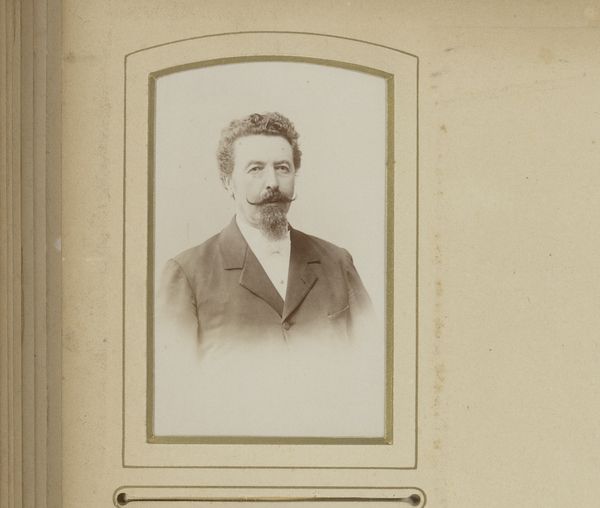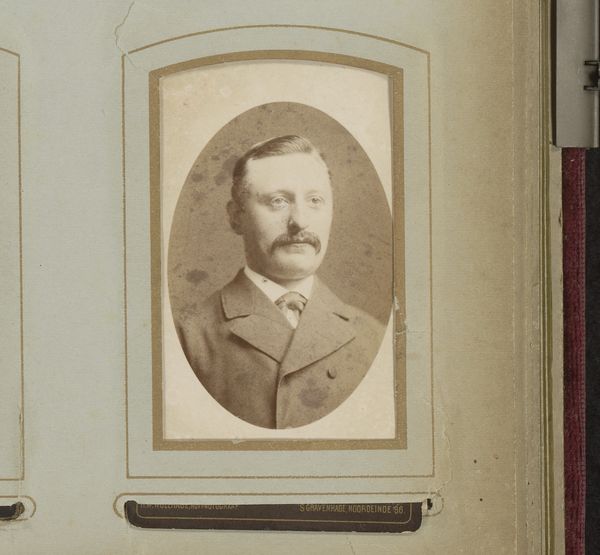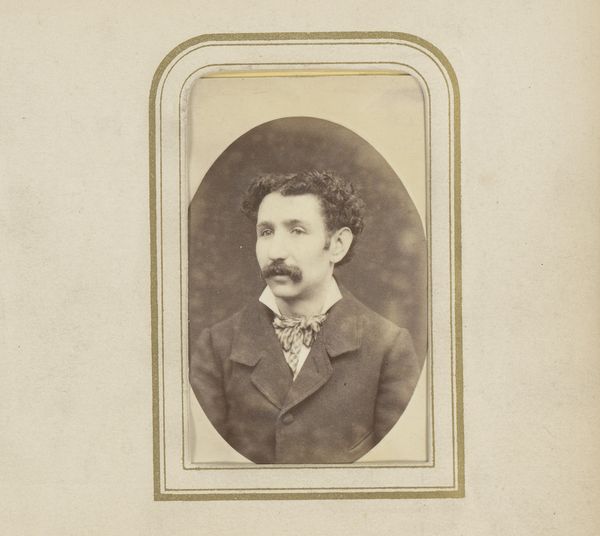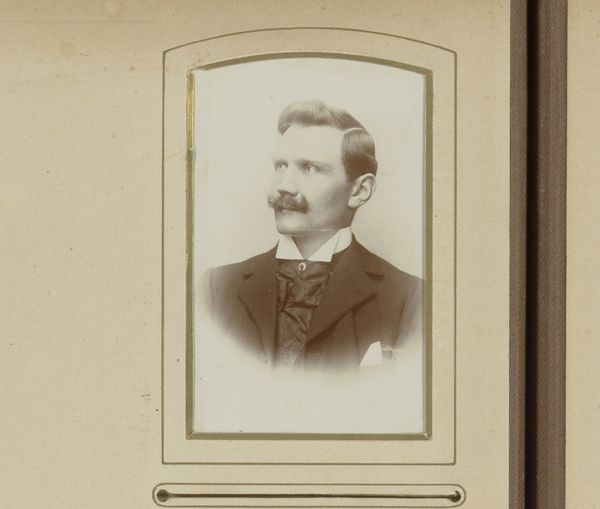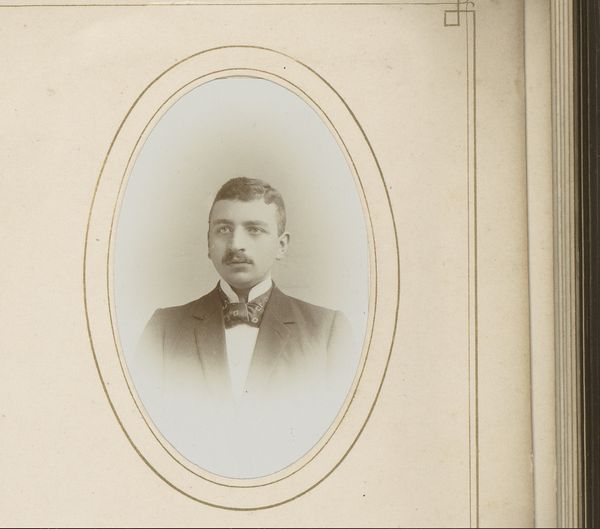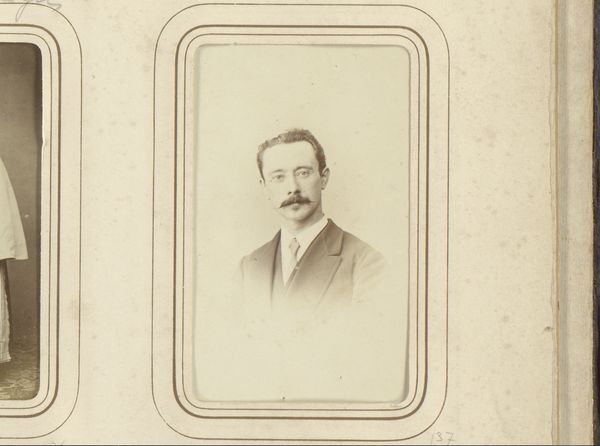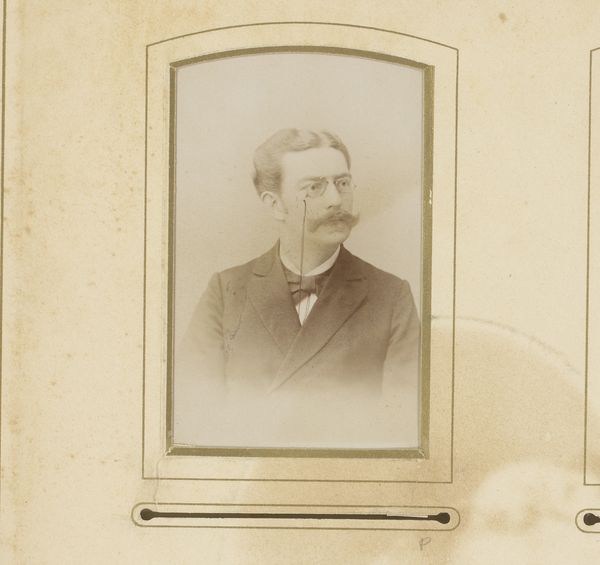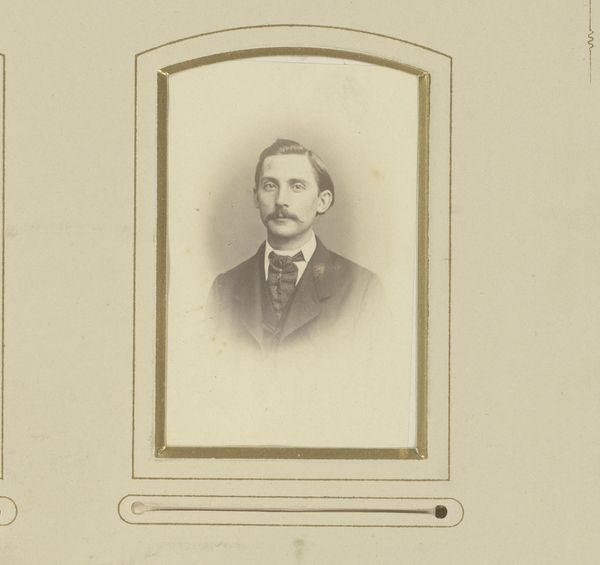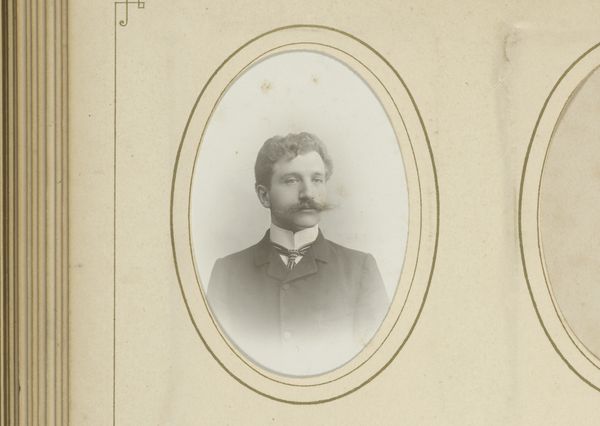
photography, gelatin-silver-print
#
portrait
#
charcoal drawing
#
photography
#
gelatin-silver-print
#
portrait drawing
Dimensions: height 82 mm, width 53 mm
Copyright: Rijks Museum: Open Domain
Curator: Here we have an intriguing gelatin-silver print, dating back to around 1870, known as "Portret van een zittende man," attributed to A. Blavet. What’s your first impression? Editor: It's incredibly subdued, almost ethereal. The tones are muted, lending it an air of melancholy, despite what appears to be an affluent subject. I immediately focus on the tonal qualities of the gelatin silver print, itself – how it mutes and almost equalizes the light, bringing the gentleman into relief. Curator: That air of melancholy is fascinating. I'm drawn to considering the social context in which this portrait was created. The subject is a bourgeois man—you can see this from the cut of his suit, bow tie and groomed mustache – whose identity we might never fully know. The work becomes an exploration of visibility and erasure within the photographic medium. Who had the means and desire to commission images and who didn’t? Editor: Precisely. And think about the labour involved in producing the image – the photographer, the materials, the developing process. The surface of the print is aged; it hints at a history of objecthood, circulation, and eventual inclusion into our collection. There's a physicality to that history. Curator: Yes, materiality as a marker of history is very relevant. Photography was still relatively new, yet rapidly changing as a medium. The pose and the framing feel quite conventional, echoing traditions of painted portraiture. However, even these technological advances were steeped in power structures—the very act of capturing an image was never neutral. Editor: I wonder about Blavet’s choices regarding the printing paper – whether they opted for a specific brand due to its handling properties or chemical reactions. Each element—paper, light-sensitive chemicals, printing process—influenced the tonal range and level of detail. The photographer is a maker. Curator: It underscores how the aesthetics we admire were achieved through specific means, reflective of a society still grappling with identity, class, and representation. It provides valuable access to the individual and a wider view of the norms in society, and how people negotiated their place within the photographic record. Editor: I leave with an appreciation for the intersection of materiality and artistic choice in producing an aesthetic experience that is at once immediate, reflective and steeped in history. Curator: A reminder that even the most seemingly straightforward image is laden with complex narratives of personhood, representation, and material realities, prompting us to delve deeper into the layers of the past.
Comments
No comments
Be the first to comment and join the conversation on the ultimate creative platform.
